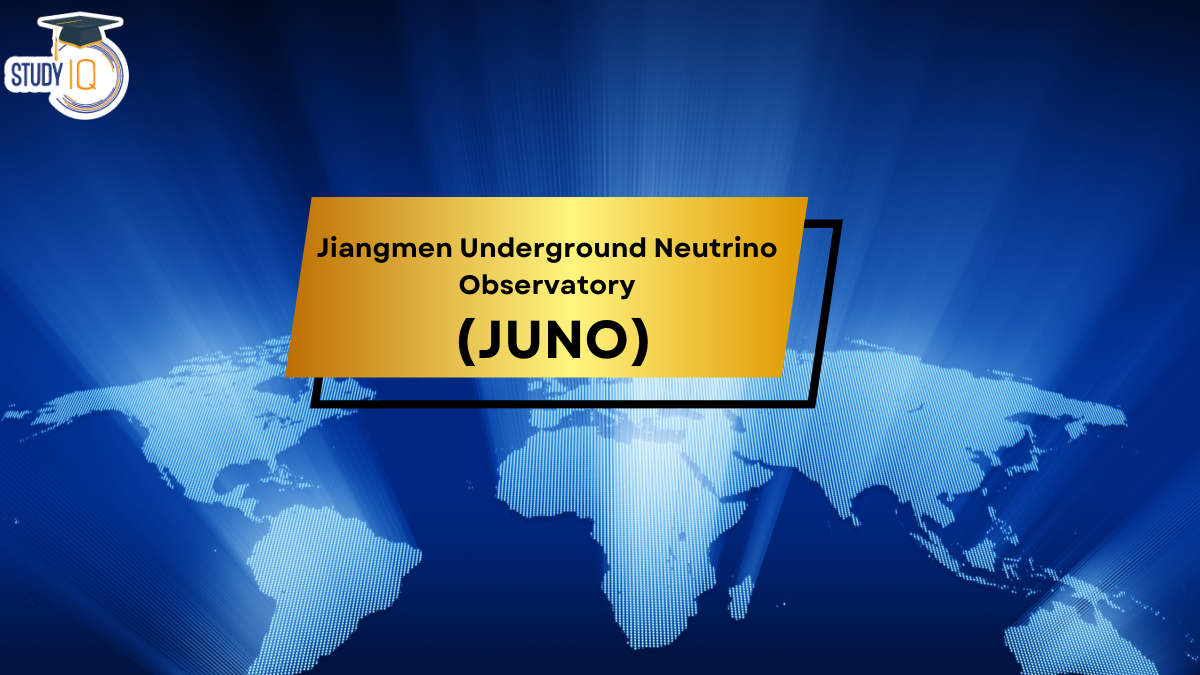Table of Contents
Context
After years of construction, the $300-million Jiangmen Underground Neutrino Observatory (JUNO) in China’s southern Guangdong province will soon start gathering data on neutrinos. Its construction began in 2015 and is expected to become fully operational in the latter half of 2025
About Jiangmen Underground Neutrino Observatory (JUNO)
- It is a cutting-edge neutrino research facility.
- It is designed to be one of the largest and most sensitive neutrino detectors in the world.
- The facility’s core feature is a massive 600-tonne spherical detector outfitted with thousands of light-detecting tubes. This detector will be enclosed in a 12-storey cylindrical pool of water.
- JUNO is a globally collaborative project with contributions from scientists and institutions in France, Germany, Italy, Russia, the U.S., and Taiwan, among others.
Objectives of JUNO
- Neutrino Mass Hierarchy: One of JUNO’s key goals is to determine the neutrino mass hierarchy—whether neutrinos have a normal mass ordering or an inverted one. This is crucial for understanding the fundamental properties of neutrinos and their role in the universe.
- Precise Measurement of Oscillation Parameters: Neutrinos undergo oscillations, where they change from one type (or flavour) to another as they travel. JUNO aims to precisely measure the parameters governing these oscillations, contributing to our broader understanding of particle physics.
- Exploration of New Physics: JUNO has the potential to detect anomalies or behaviours in neutrino interactions that could indicate new physics beyond the Standard Model.
- Supernova Detection: The observatory is equipped to detect neutrinos from distant supernova explosions, providing insights into astrophysical phenomena and the life cycles of stars.
| Neutrino observatories around world
|
About Neutrino
- Neutrinos are a type of subatomic particle.
- They don’t have an electric charge. They have a small mass and are left-handed
- Left-Handed: A physics term meaning the direction of its spin is opposite to the direction of its motion
- They are the second-most abundant particles after photons (particles of light) and the most abundant among particles that make up matter.
- They are produced in high-energy processes such as within stars and in supernovae.
- On earth, they are produced by particle accelerators and nuclear power plants
- They are very hard to detect as they hardly interact with other forms of matter due to their lack of electrical charge.
- Importance of Neutrinos:
- The early universe: Neutrinos offer insights into subatomic processes that occurred right after the Big Bang.
- Astrophysical phenomena: Observing neutrinos helps us understand solar processes, supernovae, and the Earth’s interior.
- Particle physics: They challenge the Standard Model of particle physics and could point toward new physical theories.
| India’s Neutrino Observatory
|


 National Register of Indian Citizens (NR...
National Register of Indian Citizens (NR...
 World Population Day 2025, Themes, Histo...
World Population Day 2025, Themes, Histo...
 Special Intensive Revision (SIR) in Biha...
Special Intensive Revision (SIR) in Biha...





















